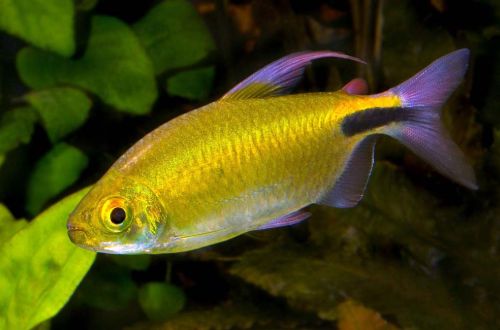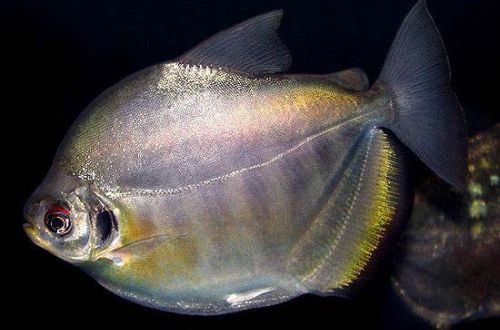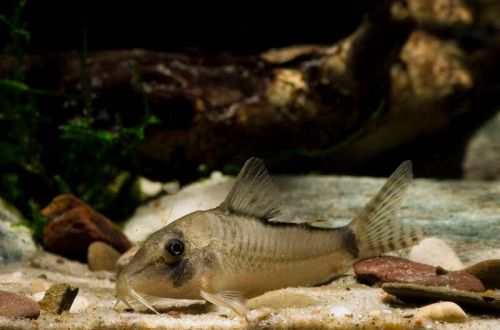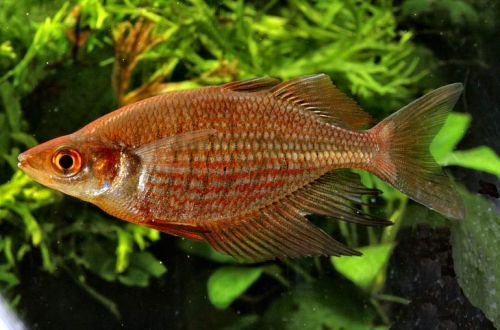
Congo diamond
Bricinus longfin or Congo diamond, scientific name Brycinus longipinnis, belongs to the family Alestidae (African tetras). A flock of these fish looks great and is able to decorate with itself almost any freshwater aquarium, due to its compatibility with many other species and relative unpretentiousness in maintenance. Its wide distribution is limited only by some difficulties in breeding at home, but it is worth noting that all problems have already been solved by professional breeders.

Contents
Habitat
It comes from equatorial Africa from the territory of the modern states of the Gambia, the Democratic Republic of the Congo and Gabon. It lives in large rivers, streams and tributaries in the rainforest canopy, sometimes can be found in brackish estuaries flowing into the sea.
Brief information:
- The volume of the aquarium – from 150 liters.
- Temperature – 23-26°C
- Value pH — 6.0–7.5
- Water hardness – soft to medium hard (5-19 dGH)
- Substrate type – soft dark
- Lighting – subdued
- Brackish water – no
- Water movement is weak
- The size of the fish is up to 12.5 cm.
- Diet – predominantly meat diet
- Temperament – peaceful, active
- Keeping in a flock of 6 individuals
Description
Adults reach a length of about 12 cm, males are somewhat larger and have a more saturated body color and a characteristic elongated dorsal fin of a beautiful turquoise color, the rest of the fins and tail have a similar color. The color of the body depends on the lighting and varies from golden to greenish.
Food
Often there are fish caught from the wild on sale, so dry industrial food is not always suitable. Check with sellers what they feed the Congo diamond and serve similar products. It is worth noting that fish prefer protein foods and will not refuse such dishes as earthworm cut into pieces or shrimp meat.
Maintenance and care, maintenance of the aquarium
The main condition for successful keeping is large areas for swimming, so do not overload the aquarium with decorative elements, a small driftwood and a few groups of plants are quite enough. High ones are located along the walls, and undersized in the center.
It is noted that the best coloration of the fish is shown in low light against the background of a dark substrate. In natural reservoirs where this species lives, the bottom is usually littered with numerous leaves of trees and various kinds of plants, which, during decomposition, release tannins and color the water in a slightly brown color. It is possible to reproduce a similar picture at home, but sometimes it is enough to use a filter with peat-based filter material to make the fish feel at home.
Brilliant Congo is very sensitive to nitrate accumulation. Monitoring their concentration should be regular, and as a preventive measure, part of the water should be renewed with fresh water once a week by about 20% of the tank volume. Another important aspect is the concentration of oxygen in the water, make sure that the spray stones provide numerous small bubbles for efficient gas exchange.
Behavior and Compatibility
Peaceful active schooling species, it is recommended to purchase a group of 6 individuals. Compatible with many fish of similar size and temperament. For small and slow-moving species, the Congo can be unnecessarily uncomfortable. It pairs perfectly with those from the same natural habitat, such as the Tetra-Congo and the African red-eyed tetra.
Breeding / breeding
Most open sources indicate great difficulties in breeding in the artificial environment of home aquaria, however, this is quite achievable. Congo diamond belongs to spawning species, it is prone to eating its offspring, and therefore spawning is recommended to be carried out in a separate tank.
Spawning is stimulated by setting the temperature within the range of 23–26°C in soft (dGH 2–5) and slightly acidic water (pH 6.0–6.5) and the inclusion of a large amount of fresh or frozen protein foods in the diet. When the females are noticeably rounded, they are transplanted into an already prepared spawning aquarium along with several of the largest and brightest males.
It should have identical water parameters, subdued lighting, low filtration (simple sponge filter). In the design, dense thickets of low small-leaved plants or mosses are used, with which the entire bottom is covered. Such a plant carpet serves as an excellent means of protecting eggs from fish.
At the end of spawning, its completion is determined by noticeably “thinner” females, the fish are returned back to the general aquarium. In the thickets, you can see several hundred orange eggs. From this point on, place as many spray stones as possible and connect them to the aerator, thus ensuring effective purging and saturation of the water with oxygen. The fry will appear in 4-6 days, and after another two days they will begin to swim freely. Aeration is reduced so that juveniles are not knocked down by a stream of ascending bubbles. At the first stages of life, feed with special microscopic food from a pet store, or grow microorganisms on your own, for example, shoe ciliates.
Fish diseases
Of particular danger are organic pollution (nitrates, nitrites, etc.) and low levels of dissolved oxygen. By satisfying both of these requirements and creating a balanced ecosystem in your aquarium, you can minimize the risk of disease, since the vast majority of problems are due to improper maintenance.





